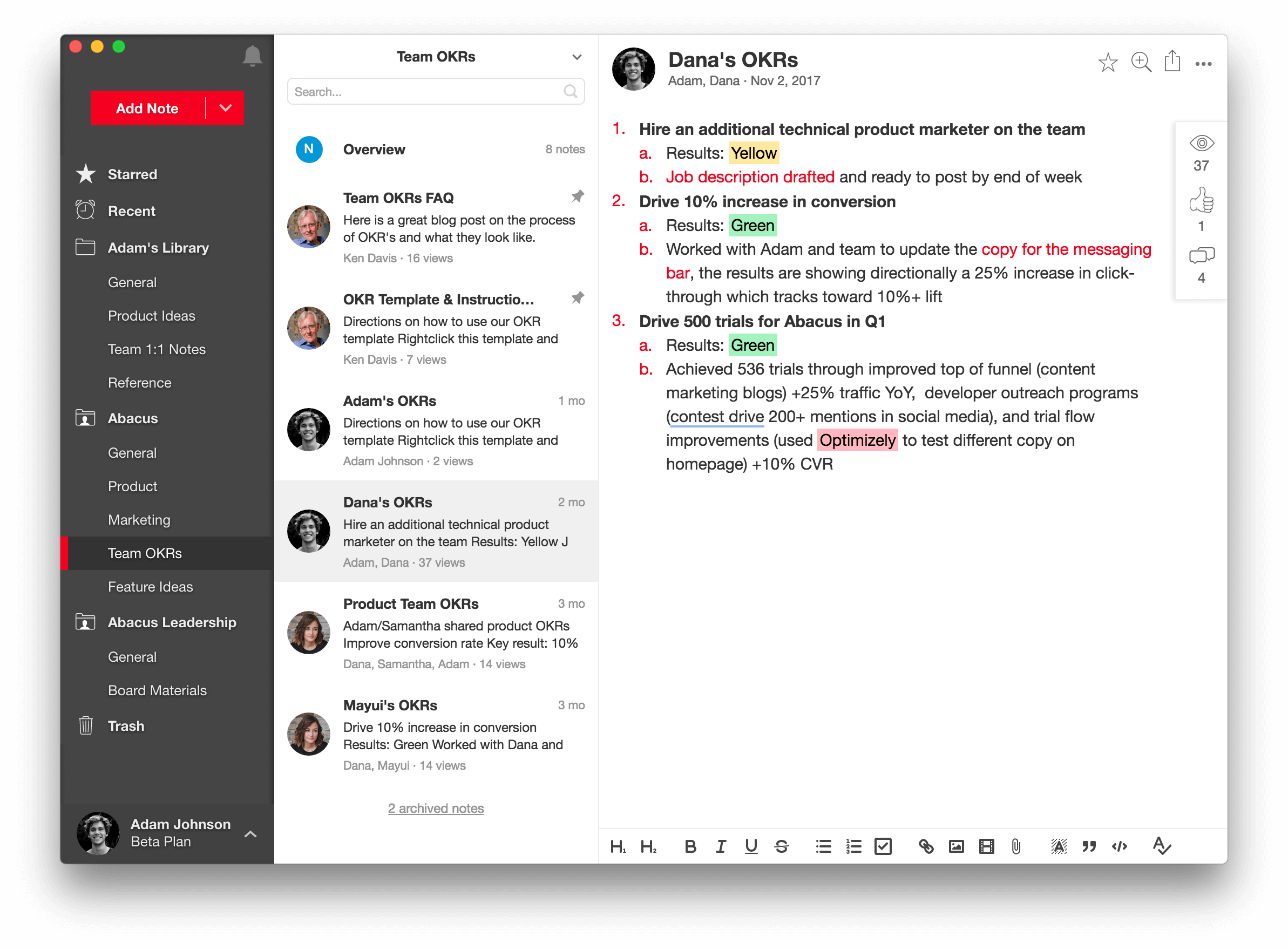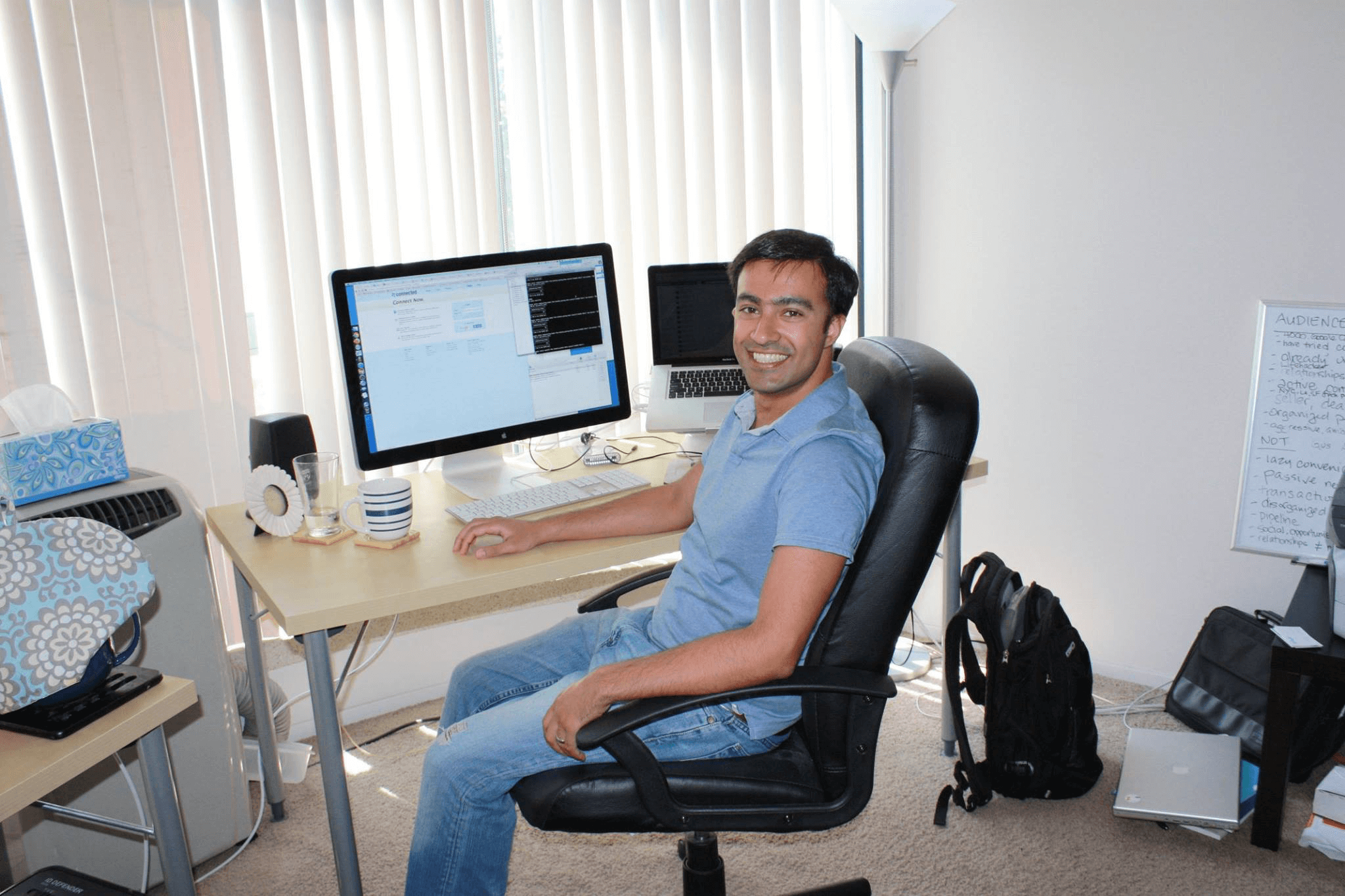Sachin Rekhi explains how continuous feedback loops lead to better products

Welcome to the latest post in our Age of Product Excellence series — a deep exploration of the Product Excellence Methodology, the product leaders who practice it, and the excellent products that result. Join us as we shine light on the strategies and thought processes behind an excellent product that customers use and love.
When it comes to the connection between Product Excellence and product discovery, it’s simple: You can’t have one without the other. And while many product teams know they should be doing discovery, they struggle to actually make time for it.
Sachin Rekhi, founder and CEO of Notejoy, puts it this way: “Product discovery is something that’s incredibly important for product teams to be doing at any scale, any size, and any stage. And despite that, it’s one of these things that teams don’t do as frequently as they should.” Throughout more than a decade in Silicon Valley — both as a product manager and startup founder — Sachin has been obsessed with new product innovation.
Product discovery is something that’s incredibly important for product teams to be doing at any scale, any size, and any stage. And despite that, it’s one of these things that teams don’t do as frequently as they should.
We caught up with Sachin to learn about his approach to product discovery with his current company, Notejoy. He takes us along his startup journey, from the initial spark of an idea to how he’s refined his product discovery process, simplifying the way he collects, synthesizes, and responds to feedback from customers, all while continuing to build a product and company that customers love.
A huge missed opportunity
The best ideas don’t generally come to us in a formal meeting or brainstorming sessions. They’re usually sparked by a casual conversation with a coworker or come to us in a burst of inspiration. And people often forget to document these moments of brilliance beyond a quick scribble on a whiteboard or a short email to a coworker.
Sachin had this realization during his time at LinkedIn. He was overseeing a team of 500 people that had grown to $20 million in revenue and he kept coming back to the same question: “How do I make this 500-person ship as effectively and productively as possible to achieve our shared goals?”
As he pondered this question, Sachin landed on one big problem: So much knowledge gets stuck with individual people or small groups. He says, “Only about 10% of institutional knowledge makes it to a broadly shared document or wiki page. 90% stays in email, Slack, in people’s personal notes, in people’s heads, or on the whiteboard.”
Only about 10% of institutional knowledge makes it to a centralized place. 90% stays in email, Slack, in people’s personal notes, in people’s heads, or on the whiteboard.
And, Sachin continues, “That was a huge missed opportunity.”
The genesis of the idea for Notejoy was: What if we could build a productivity tool that the individual person actually loves using, and also happens to be a great collaboration tool?
Early user research at Notejoy
From the early stages of Notejoy, Sachin knew that customer feedback would be critical to the company’s success. That’s why he tapped into his network in Silicon Valley and conducted interviews with around 150 potential customers to understand their collaboration challenges.
Sachin says he’d ask, “What are your collaboration challenges today? Where do you perceive any issues that you have?” After asking people to share their experiences, he’d talk about the pain point that he had noticed — this idea that a lot of knowledge was not being captured in a structured and searchable way — to see if those challenges were resonating.
“The first wave of interviews was validating the pain point.”

Codifying the product discovery process
Sachin’s years of product management experience had already taught him the importance of product discovery — and the tendency for product teams to neglect this practice. Some teams end up relying on quarterly research studies, which are helpful, “but the reality is you need to be getting feedback continuously to constantly improve the product.”
We need to move beyond one-time user research studies and really come up with a continuous feedback loop.
For Sachin, there are three distinct parts of a continuous feedback loop:
Step 1: Establish a “feedback river” which gives you real-time access to feedback on a regular basis.
Step 2: Create a feedback system of record, which gives you a single source of truth for all your aggregated customer feedback.
Step 3: Perform deep synthesis of the feedback you’ve received to really understand what your customer is aspiring to do.
In the next few sections, we’ll look at each step in more detail.
Part 1: The feedback river
Too often when product teams scale, they end up delegating research to other parties like user researchers and product marketers. But instead of relying on this second-hand information, “getting first-party feedback directly from the customer is the most important part,” says Sachin. He recommends building mechanisms that enable you to get feedback directly from your customers.
At Notejoy, they’ve established the “feedback river,” a single channel where they can get constant feedback in real-time, aggregated across several sources. Here are a few examples:
- Anytime someone sends a customer support issue, that’s valuable feedback to understand what the user is asking for or wondering.
- After a customer has been using Notejoy for 14 days, they’ll get a pop-up net promoter score (NPS) survey within the product. The survey asks users how likely they are to recommend Notejoy to a friend or colleague and prompts them to give the product a rating and provide a reason for why they gave that score.
- Anytime a user cancels an account, Notejoy asks them to fill out a field explaining why they are canceling.
- Anytime anyone searches within Notejoy’s help center, that search query is a good indication of what is not self-explanatory about the product.
All of these feedback items automatically flow into a Slack channel in real-time. Sachin says scrolling through the # feedback channel has become his go-to activity whenever he has a few moments of downtime. He can get a quick glimpse into NPS survey results, user cancellations, and upgrades right as they’re happening. “Now it’s effortless for me to get real-time feedback,” he says.

Part 2: Aggregating feedback in a system of record
Of course, collecting customer feedback is just the first piece of the feedback loop. Sachin says, “You need to be able to aggregate this so you can start making product and roadmap decisions based on the collective voice of the customer.” And that’s where the feedback system of record comes in. At Notejoy, Sachin explains, “This is a single source of aggregated truth that we use to have all the feedback from our customers in one place.”
Notejoy has built an internal and external-facing tool so users can make requests and vote on the features they want. Notejoy’s support team can also upvote feature requests on a customer’s behalf. As soon as a support request comes in, a member of the support team thanks the customer for the feedback, adds it to the feature requests page, and sends the customer a link to the page.
All the feedback is aggregated in one place for the product team to be able to analyze and decide which features to implement. When we go to prioritize our roadmap every quarter, we can easily look at who’s been making requests, what features they’ve asked for, and how frequently features are requested.
Having all the feedback stored in a system of record establishes a direct connection between customer feedback and the product roadmap. Because all feedback automatically goes into the system of record, it also helps solve the challenge of recency bias. Sachin explains, “Oftentimes product teams end up prioritizing feedback items that they recently heard or from customers who are screaming the loudest, but that isn’t necessarily representative of the entire customer base.”
Step 3: Synthesizing feedback
Product Excellence isn’t just about doing whatever your customers ask — it’s about listening to customers, synthesizing what you’re hearing from them, and making decisions that are aligned with your business. Sachin says, “I think it’s important to acknowledge that and to talk about some of the reasons why you’re not simply implementing features and priority order based on customer requests.”
Sachin sees three main reasons why product teams need to spend time synthesizing feedback: First, customers are great at telling you their pain points — what’s broken and what needs fixing. But they’re generally not great at designing what the solution looks like. Second, customers’ priorities are not always aligned with your business’s priorities. Generally, a business will have three priority buckets of acquisition, engagement, and retention, but customer requests tend to only address the engagement bucket. Finally, customer feedback tends to focus on the here and now, while, Sachin argues, “Product teams always should have a strong vision and a strategy for where they want to take the product.”
Your own product vision should be much more far-reaching and long-term focused, and you’re rarely going to get feedback aligned with that long-term vision from your customers.
Recognizing these shortcomings of customer feedback, Sachin says, “That’s where it makes sense to think about prioritizing vision-oriented features and elements on top of things that your customers are asking for on a regular basis.” This is why there’s a deep synthesis step where product teams analyze all the feedback they’ve received, look at it in relation to the company’s business objectives, and compare it to their own vision of the product to inform the roadmap.
Closing the feedback loop with customers
No one wants to feel like they’re taking the time to submit thoughtful feedback without getting anything in return. To close the loop and demonstrate to customers just how valuable their opinions are, Notejoy has several ways of letting customers know their feedback has been integrated into the product. Whenever a new feature is available in beta, Notejoy emails all the customers who requested it to see if they’d like to participate in beta testing.
And once a new feature is officially launched, the company will send an email to all the customers who requested it, thanking them for their input, sharing the details of the feature, and inviting them to continue sharing feedback. Sachin sees how much this means to customers: “Our customers tell us the reason they love us compared to alternatives is that we’re way more customer-centric. We actually listen to our customers and are constantly innovating on their behalf.”
Sachin believes that most product teams have the intention of doing these things, but many struggle to close the loop with their customers. The key to actually making it part of your process is to automate as much as possible. That way you don’t feel like every time you’re launching a new feature you have to do new work. Instead, “you simply already have a process in place that allows you to reach out and delight your customers.”
Tools like productboard, the feedback river, and feedback system of record are incredibly valuable for building a customer-centric organization.
Sachin Rekhi is the founder & CEO of Notejoy, a collaborative notes app for teams. He has 20 years of experience creating products to help people be more productive and successful every day, and has spoken on product management at Wharton, Stanford, Facebook, LinkedIn, Google, P&G, and more. Check out his blog at www.sachinrekhi.com.





![The CPO’s Blueprint for Annual Planning: An Opportunity to Drive Change [Part 3]](https://www.productboard.com/wp-content/uploads/2024/11/strategy-blueprint-560x293.png)
